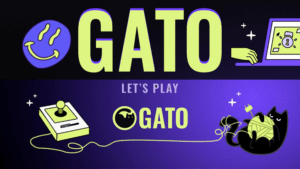In a world governed by algorithms, the success or failure of a game can depend on a simple numerical value.
This article seeks to explain to both developers and players the importance of the accumulated amount of wishlists on Steam and other similar platforms.

An sea of games
With the number of games available growing year by year, having a good game is no longer enough and standing out from the crowd becomes a priority for all developers. There are many variables that influence the success of a game (as well as its failure) but we are going to try to understand one of the most basic ones.

Wishlists
What does this mean for the player? In simple terms, it is a means that allows you to make a reminder about a game that you visited and were interested in, which you could add to a list of possible games to buy in the future, either because that game has not yet been released or it is simply waiting for a better time to buy it (discounts, seasonal events, etc.) and you don’t want to lose it among this sea of games.
You can find this feature not only on Steam but also on other platforms.
What does this mean for the developer? It is a preview of the interest that your game can generate, a statistic that can be used to calculate possible future sales or even a number that allows you to negotiate with publishers. The number of wishlist that a game has can influence its launch and is a highly valued number.
It also has effects on the different platforms, but we are going to focus on Steam, a high number of wishlists ensure that the platform promotes the game in a “natural” way, it also allows it to be positioned more frontally at events when it is shown on the platform. “If you have many wishlists it is because many are interested and if many are interested, it will be shown to more people.”
The logic seems simple, but it isn’t all that matters, the moment and how those wishlists are achieved also affect, it should be noted that this is between “myth and reality”, because Steam assures that it is not a real factor, but according to the experience of many developers it seems so.
Let’s take a practical example, an indie game may have “100.000 wishlists” but they were collected over 5 years and during the last 3 months before launching, only “5.000 wishlists” were added, the “momentum” of the game was lost and most of those wishlists are “cold…” as a result the launch may not be as effective and that game is in danger of not having much scope.
In the next video Steam explains a little more how it handles the visibility of games.
The reality
As we saw, for developers the importance of players wishlists becomes essential and they are affected much more by their use.
As players, I believe there is a certain responsibility to help the games we like or are interested in by clicking a simple button, the cost is free and we can help make that game a success.
As developers we have to understand that “wishlists” are important, but it is only one factor among many, being aware that possibly only between 10% to 30% of those wishlists become sales (with a good launch) and that hopefully throughout the life of the game we cover 50% of the total of those wishlists. There are always special cases that break with these statistics and sell much more or the conversion rate is higher but they are just that… special cases.
But then, does having many wishlists ensure success, yes or no?
No, but it does give a good base and opportunities to each game that is presented on the platform, let’s say that the greater the number of wishlists, this becomes a beacon of light in this sea of games to stand out, if they are more recent the light It will be strong, if they are very old the light will be much dimmer…
And speaking of beacon, have you already added our game Beacon of Neyda to your wishlist? No? Well, this is your chance.




No comment yet, add your voice below!